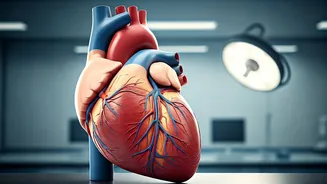Embracing a Healthy Heart
Managing blood pressure is essential for overall health, and incorporating physical activity is a crucial step. Fortunately, there's a variety of exercises
that can assist. A consistent workout regimen is important, as it helps fortify the cardiovascular system. Regular exercise can decrease blood pressure naturally and, furthermore, reduce the risk of more severe problems down the line. It is not just about the physical movements; it is also about the habit of making the right choices for your body. Consider different types of exercises. Try to create a program that includes multiple options, thereby preventing boredom and facilitating a more balanced fitness strategy. This not only keeps things interesting but also ensures that different muscle groups and systems are engaged, promoting comprehensive health benefits.
The Power of Cycling
Cycling is a low-impact exercise known for its cardiovascular benefits, perfect for people of all fitness levels. This exercise is gentle on the joints, making it a great option. When you cycle, your heart rate increases, causing blood vessels to stretch and relax, which helps improve blood pressure over time. Regular cycling can lead to improved cardiovascular function. The benefits extend beyond just lowering blood pressure, too. It is a fantastic way to boost your overall health. To make cycling a regular part of your routine, set realistic goals and steadily increase the intensity and duration of your rides. Whether you prefer riding outdoors or using a stationary bike, consistency is key. Cycling doesn't just benefit your heart; it is also an enjoyable activity that can be done alone or with friends, making it easier to stick with.
Strength Training Benefits
Strength training, like lifting weights or using resistance bands, offers a different path to improved blood pressure. When you engage in strength training, your muscles contract and relax. This process strengthens blood vessels and improves the efficiency of your circulatory system, which in turn reduces blood pressure. Strength training helps increase muscle mass and boosts metabolism, which further contributes to overall health. Incorporate strength training into your routine by starting with light weights or resistance and gradually increasing the intensity. Begin by focusing on major muscle groups, such as the legs, chest, back, and core, and aim for a balanced workout. Always remember to warm up before each session and cool down afterward to prevent injuries and optimize performance. Consistent strength training sessions help you gain physical strength and positively impact your cardiovascular health.
Swimming for Wellness
Swimming is a full-body workout that provides significant benefits to your cardiovascular system. The buoyancy of water makes it a low-impact exercise. This also reduces stress on your joints, making it a viable option for a wide array of people. Swimming elevates your heart rate and promotes better blood circulation. It also strengthens your heart, improves blood vessel function, and reduces blood pressure. Swimming is more than just physical exercise; it's a refreshing activity. You can enhance your swimming routine by including different strokes to engage various muscle groups, increasing the intensity for better results. Consider integrating swimming into your regular fitness plan, to improve your blood pressure and gain mental and physical health benefits.
Deep Breathing and Medication
Deep breathing exercises and medication are also very important aspects for managing blood pressure. Deep breathing techniques help reduce stress and calm the nervous system, which in turn can lead to lower blood pressure. Practices like diaphragmatic breathing and alternate nostril breathing can be incredibly effective. To incorporate these exercises, find a quiet spot, sit comfortably, and focus on slow, deep breaths, filling your lungs completely. Coordinate your breathing to a slow, regular rhythm. Combining deep breathing with medication (if prescribed by a doctor) will provide better control of your blood pressure. Always follow your doctor's instructions. Deep breathing is a cost-effective and natural way to complement other treatments and promote overall well-being.
Yoga: Mind and Body
Yoga combines physical postures, breathing techniques, and meditation. This combination is beneficial for managing blood pressure and improving overall wellness. Yoga helps reduce stress, a major contributor to high blood pressure. Yoga poses, like those focusing on flexibility and balance, can improve blood flow and heart health. Through regular yoga practice, you can calm your nervous system. Yoga is not only about physical exercise. It's also about mental and spiritual well-being. Practicing yoga regularly can improve your cardiovascular health by decreasing blood pressure and promoting relaxation. Whether you attend a class or practice at home, consistency is key to experiencing the benefits. Include yoga in your daily life to better your overall health and wellness.













